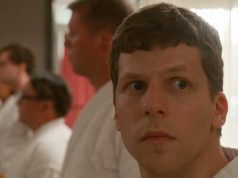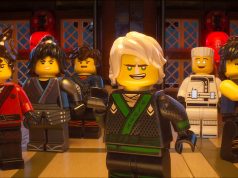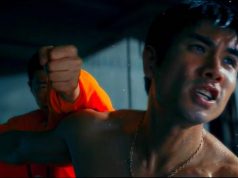Watching a Quentin Tarantino film, one is struck by the exactness of the dialogue he writes. There are no throw-away lines, no wasted chatter. You get the feeling everything you hear on the screen is word-for-word, with nothing improvised by the actors or altered from Tarantino’s screenplay.
The contrast between this style and that of your average movie-factory product is sharp. With most films, the dialogue is a means to an end: The characters have to say SOMETHING to keep the plot moving; which words they choose doesn’t matter, as long as the basic idea is expressed. In a Tarantino film (or a David Mamet film, or a Coen Bros. film), the story is adorned with well-crafted dialogue that is full of wit and style.
In “Kill Bill: Vol. 2,” the words continue to be Tarantino’s bread-and-butter, complemented by his other staples: wanton violence, perverse humor, and a truly exciting visual style. Watching it is like watching a symphony. You know that every part, even for the lesser-used instruments, has been composed deliberately and with due concern for the product as a whole.
In his continuing homage to other film styles, Tarantino opens this one like a Western, with a desert setting and stark black-and-white photography. It is a flashback to the incident that set everything off, the day that Bill (David Carradine), leader of an assassin squad, felt betrayed by one of its members and turned the rest of the crew against her on the eve of her wedding. The Bride (Uma Thurman) alone survived the massacre of her wedding party, and she lay in a coma for four years. Now, as viewers of “Vol. 1” will recall, she has awakened, wants to know what happened to the child she was pregnant with, and is P.O.’ed in a major way at Bill and his band of killers.
“Vol. 1” saw her dispatch several of them in a manner both balletic and systematically violent. (These are people who don’t just want to kill each other; they want them to suffer first, and then to die with a flourish.) “Vol. 2” focuses more on story than on action — so much so that the first 20 minutes feel slow — but both components are represented with equal flair.
I like the way Tarantino tells his stories. In this film, we’re on a need-to-know basis. We learn crucial information — how Elle Driver (Daryl Hannah) lost her eye, for example, or how The Bride was trained by Pai Mei (Gordon Liu) — in flashback form just at the moment it becomes useful to know it. What feel like tangents turn out to be central building blocks. The film’s narrative is a non-linear jungle gym that prevents predicting what will occur next.
Uma Thurman continues to be a stalwart, often-bloody heroine, combatting Bill’s trailer-dwelling brother Budd (Michael Madsen), Elle Driver, and finally Bill himself, suffering all manner of setbacks and injuries along the way. (One is reminded of the Black Knight in “Monty Python and the Holy Grail”: Apparently, when you’re The Bride, a shotgun blast to the chest is merely a flesh wound.) David Carradine is evilly avuncular as Bill and Michael Madsen is enjoyably slimy as Budd.
But lo and behold, it’s Daryl Hannah who wins the film for me. She is devilishly funny as Elle, and her battle with The Bride is one of the most breathtakingly knock-down drag-out fights I’ve seen in a movie. Her segment of the film is its zenith, the perfect blend of dark comedy and adrenaline-charged action. Once she is dealt with — and oh, my, is she dealt with — there’s almost nothing the film can do to top it.
Did I mention there’s an attack snake in the film? Well, there is. The “Kill Bill” movies demonstrate that Tarantino still knows what “cool” is.
A- (2 hrs., 15 min.; )





